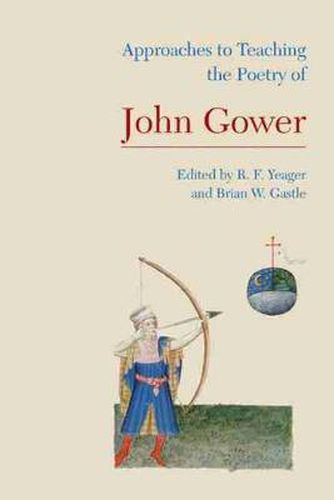Readings Newsletter
Become a Readings Member to make your shopping experience even easier.
Sign in or sign up for free!
You’re not far away from qualifying for FREE standard shipping within Australia
You’ve qualified for FREE standard shipping within Australia
The cart is loading…






A poet who wrote fluently in Middle English, Anglo-French, and Latin, John Gower typifies the English Middle Ages. His economical and sober style, the topics he addressed-marriage, love, chivalry, social class, law, and religious faith-and the depth and breadth of his references to earlier literature, myth, and folktale made his work attractive not only to contemporaries such as Chaucer but also to later poets such as Spenser, Shakespeare, and Milton. Gower is increasingly acknowledged as a poet whose texts offer unique opportunities to teachers wishing to introduce their students to the riches of medieval literature and culture.
The essays in part 1, Materials, review the available editions and translations of Gower’s works, compile useful electronic resources for teaching, and discuss the sources and analogues and critical work on his canon. In part 2, Approaches, contributors make recommendations for teaching the historical context of Gower’s writing, involving topics from estates theory and law to confession and medicine; for examining his language and rhetoric in the classroom, including reading his work aloud; and for studying his works in various theoretical and comparative ways, with a special focus on his relation to classical as well as other Middle English authors. A final section considers the various classroom contexts in which Gower is taught, from community college to graduate school.
$9.00 standard shipping within Australia
FREE standard shipping within Australia for orders over $100.00
Express & International shipping calculated at checkout
A poet who wrote fluently in Middle English, Anglo-French, and Latin, John Gower typifies the English Middle Ages. His economical and sober style, the topics he addressed-marriage, love, chivalry, social class, law, and religious faith-and the depth and breadth of his references to earlier literature, myth, and folktale made his work attractive not only to contemporaries such as Chaucer but also to later poets such as Spenser, Shakespeare, and Milton. Gower is increasingly acknowledged as a poet whose texts offer unique opportunities to teachers wishing to introduce their students to the riches of medieval literature and culture.
The essays in part 1, Materials, review the available editions and translations of Gower’s works, compile useful electronic resources for teaching, and discuss the sources and analogues and critical work on his canon. In part 2, Approaches, contributors make recommendations for teaching the historical context of Gower’s writing, involving topics from estates theory and law to confession and medicine; for examining his language and rhetoric in the classroom, including reading his work aloud; and for studying his works in various theoretical and comparative ways, with a special focus on his relation to classical as well as other Middle English authors. A final section considers the various classroom contexts in which Gower is taught, from community college to graduate school.